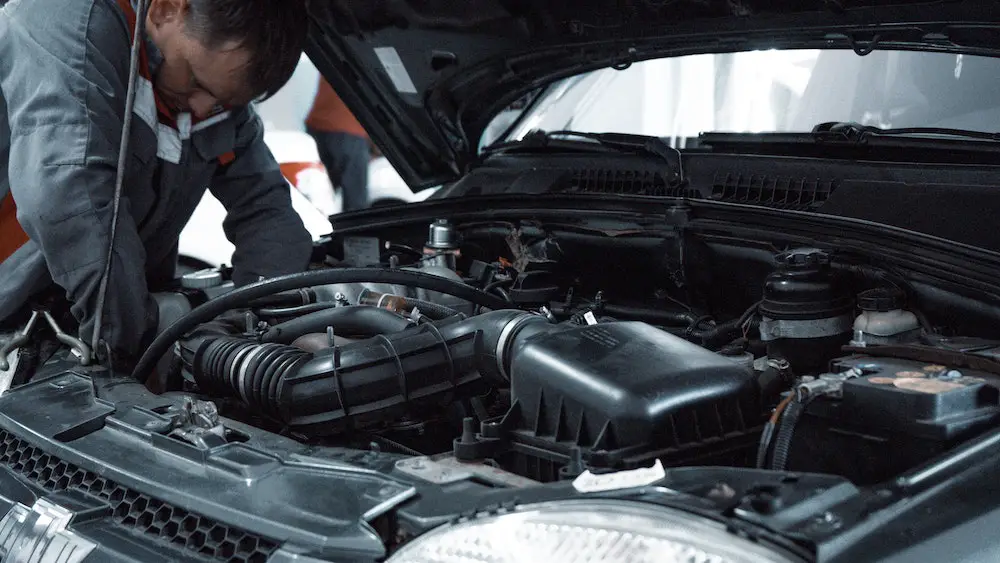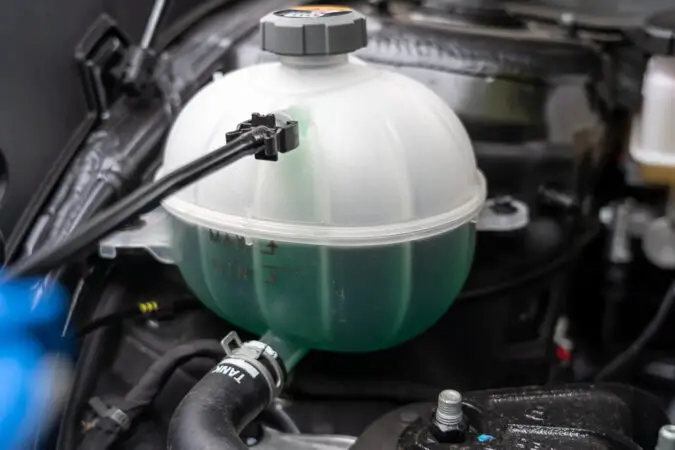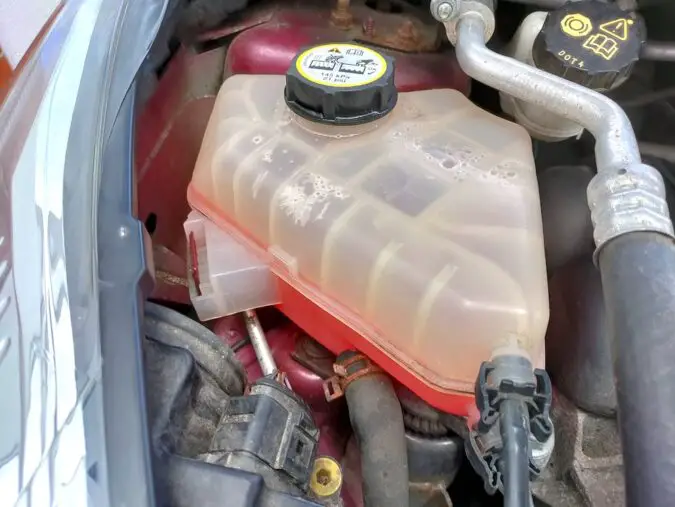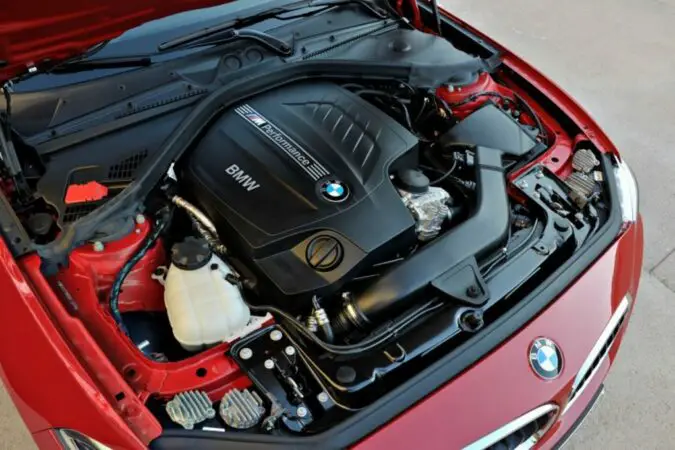Coolant is a colored liquid you mix with water and add to your engine to absorb heat and keep the engine temperature at the appropriate level. Mix the coolant with water on a 50/50 ratio and pour it into the engine through the appropriate reservoir. Apart from regulating the engine temperature, coolant also lubricates cooling system components like the water pump. If you are wondering how to put coolant in car, then you should read this.
As a car owner, knowing how to add coolant to your car engine helps you save a lot of money, and it goes a long way in preventing engine damage. The process includes understanding the best way to mix the coolant with water, knowing how to refill the car via the coolant tank, and checking the engine after adding coolant.
In addition, there are different types of coolant, and knowing which one is good for your car engine will determine the state of your engine after adding the coolant.
Types Of Coolant
Knowing the suitable coolant for your car engine is the first thing you need to figure out. It would have been better if all cars used the same coolant, but unfortunately, that’s not the case. There are different types and brands of coolant; the most popular ones are;
1. Inorganic Additive Technology
This coolant contains ethylene glycol, silicate, and phosphates, is available mainly in green color, and it’s one of the oldest coolants on the market. Inorganic additive technology prevents engine corrosion. However, it is not the best if you want to remove dirt from your engine. This type of coolant can only last for about two years, which is approximately 24000 miles.
2. Organic Acid Technology
The main component of organic acid technology is propylene glycol. Organic acid technology is available in orange color, and it is the best coolant for vehicles made by General Motors and Volkswagen. This coolant can last for about 50,000 miles.
3. Hybrid Organic Acid Technology
The main components of this kind of coolant are silicates and organic acids. The hybrid organic acid technology is available in blue, orange, pink, and yellow, but the yellow color is popular. The presence of silicate makes this type of coolant the best to eradicate corrosion. Variants include;
- Phosphate-free hybrid organic acid technology
- Phosphate hybrid organic additive technology
- Silicated hybrid organic additive technology
4. Phosphate-Free Hybrid Organic Acid Technology
Commonly known as HOAT, its main components are glycol, organic, and inorganic corrosion inhibitors. It is available in turquoise color and protects gaskets and seals from corrosion. Car brands like Porsche, Saab, Mercedes, and Jaguar use this coolant.
5. Phosphate Hybrid Organic Additive Technology
The main components of this kind of coolant are corrosion-resistance substances such as phosphates and carbohydrates. Depending on your brand, you will mostly find this kind of coolant in blue or pink. Phosphate hybrid organic additive technology is common in cars produced in Asia and other warm-climate continents.
6. Silicated Hybrid Organic Additive Technology
This type of coolant is available in bright purple color, and it contains substances such as silicates that improve the corrosion resistance properties of your engine. This coolant does not contain harmful substances such as imidazole, borates, nitrates, and amines.
Hybrid organic acid technology is the most common coolant and the best for Ford and many European vehicles. This coolant can last up to 50,000 miles, after which you must replace it following the manufacturer’s instructions.
How To Choose The Best Coolant
So that you will select the most suitable coolant for your car engine, go to the dealership to make inquiries. The dealership will suggest the best coolant for your car and save you the stress of choosing the wrong one. Also, you can check your user manual for the best coolant for your car.
When selecting a coolant for your vehicle, do not depend on color; different brands produce coolant in various colors. Check the description before making the purchase.
How To Add Coolant To Your Car
Since you now know the types of coolant available and which one is best for your car, adding coolant to your car is an easy task. Make sure you follow these simple steps;
How To Put Coolant In Car: Step 1
Park your car in a safe and cool space, turn off the engine and leave it to cool down for some minutes. While the engine is still hot, you won’t be able to touch the radiator cap; working on a hot engine can cause you injury. Relax for about 15 minutes, and let the engine cool down before you start working on it.
How To Put Coolant In Car: Step 2
Locate the coolant tank, a big white component with a yellow lid. You will most likely find a warning sign telling you not to touch it while it’s still hot. Check your user manual for the location if you still can’t find the coolant reservoir.
How To Put Coolant In Car: Step 3
Since the coolant tank is white, it will most likely be transparent, making it easy to confirm the coolant level. Knowing the maximum coolant level is easy. Check the exterior surface of the tank, and you will find some lines indicating the necessary coolant level for your car engine.
Simply put, a colored coolant and a transparent reservoir make it easy to check the coolant level. Make sure you also know how much coolant does a car take.
How To Put Coolant In Car: Step 4
Now that you know the coolant level of your engine, you can now decide whether to add to it or not. If you choose to add to the coolant, be careful while removing the cap; make sure it’s not hot and avoid damaging the cap. To prevent splashing anti-freeze on other parts of the engine apart from the reservoir, make use of a funnel.
How To Put Coolant In Car: Step 5
Get a thermostat and radiator cap replacement. Once you have added the maximum amount of coolant to the tank, cover the tank with the cap and turn it until it clicks. The thermostat is essential to your engine cooling system; once it begins to malfunction, it results in overheating.
Replace the thermostat occasionally and check other components of your car engine, such as the blower fan, belts, and hoses, that may need replacement.
How To Put Coolant In Car: Step 6
Run an engine overheating test after completing every step before this. Close the car hood, start the car and wait until the engine cooling/heating gauge reaches its average operating temperature, then begin the overheating test. After the test, recheck the coolant level to confirm if you still need to top it up.
How To Put Coolant In Car: Step 7
Carefully check for leaks. After you are done with the overheating test, check every part of the engine and coolant tank for leaks and damages; if you find any, repair or replace them immediately.
How Coolant Work
The radiator is the engine component that stores the coolant; it starts and ends its journey here. A water pump circulates the coolant around the engine through the water jacket; the coolant then sucks up the heat from the engine and flows back to the radiator.
The hot coolant passes through a thin channel in the radiator and cools down when it comes in contact with the cold air from outside. At this point, the temperature of the coolant has gone down and will travel around the engine again. This process continues as long as you drive.
Functions Of Coolant
The primary function of a coolant is to regulate engine temperature and prevent it from overheating. Your car engine contains several metal components that come in contact with one another as you drive your car; these several contacts build up a high heat level.
Typically, the maximum temperature for your engine to perform well should be around 210; once it’s above 230 degrees, your engine begins to overheat. The coolant ensures the engine does not overheat; once it enters the engine, it absorbs the heat and regulates the temperature. Also, coolant
- Prevents corrosion
- It greases your engine and
- Prevents scale escalation
Water Vs. Coolant
Coolant is a water-based liquid; some people even use water as a coolant because it can regulate engine temperature. However, water can cause corrosion to the engine and tends to freeze in low temperatures making it unable to flow around the engine. You can only use water as a coolant if it’s your last resort, but it’s never been the best choice.
Due to the above reasons, you will have to use a water-based coolant. It is liquid but contains certain substances that prevent it from freezing. The substances include;
- Ethylene glycol
- Polypropylene glycol
- Methanol
These properties keep the coolant liquid and regulate your engine temperature continuously.
When To Add Coolant To The Car
Knowing the right time to add coolant to your car engine is not a difficult task; open your car hood and check the fluid level of the coolant tank. The tank is transparent, making it easy for you to check the coolant level and decide whether to top it up or not. If you are not someone fond of checking coolant levels, some signs determine when you should add coolant to your engine.
The first sign you need to top up your car fluid is overheating; when your engine overheats, the check engine light begins to flash. Also, several cars have engine temperature warnings; when you get any of these signs, check your coolant level and top it up immediately.
Flushing The Coolant
To ensure that your engine runs with a new coolant, you must flush the old fluid before adding a new one. Flushing coolant is not a challenging task; make sure the engine cools down before you do anything. Then you will have to raise your car with a jack to have more space to work under the vehicle.
Get under the car, locate the radiator, and position a big enough container under it to collect the old coolant. Open the valve and wait for a while for the fluid to drain out. Once you are done collecting the old fluid, close the radiator drainage valve once the tank is empty. Pour clean water inside the car and start the engine; let it run for up to 15 minutes to clean out every drop of the old coolant in the engine.
Drain out the water completely and close the drainage valve. Now you can add a brand new coolant to your car engine.
What Do Coolant Colors Mean
Coolants are available in different colors, such as red, green, yellow, orange, pink, and blue. The color indicates your car coolant has other liquid properties. Green coolants (or green antifreeze) are most suitable for old cars with copper components.
How To Put Coolant In Car: Mixing Coolants
Mixing different coolants is possible if you understand the chemical properties of the ones you are mixing. You don’t have to worry about the ratio, but the type and application should be compatible, or you will damage your engine. Mix HOAT with HOAT, OAG with OAG, and so on; HOAT and OAG are incompatible.
In addition, mixing coolants will reduce the heat absorption and corrosive properties of both coolants. Drain the old coolant and add a new one instead of a mixture to protect your engine.
FAQs On How To Put Coolant In Car
Is Antifreeze Coolant
Antifreeze and coolant are similar but not totally the same; Your engine coolant is a 50:50 ratio of water and antifreeze. Antifreeze mainly contains ethylene glycol, and you must dilute it with water before you use it; after the dilution process, you can now call it a coolant. When you add water to antifreeze to form coolant, it prevents your engine components from freezing up. It helps absorb heat in your engine system and regulate temperature so your engine will be free from damage.
What Does Coolant Do
The primary function of coolant is to absorb heat and regulate the temperature in your car engine during extremely cold or hot weather. Besides engine temperature regulation, coolant also lubricates every moving part of the engine and prevents the damaged water pump, piston timing, cylinder, and head gasket.
What Is Antifreeze
Antifreeze is a colored liquid that contains ethylene glycol; it helps you to regulate your engine temperature during extreme weather. To get the best out of antifreeze, you must dilute it with water. Antifreeze also enables you to maintain liquid levels in your car engine, and it prevents rust in your car engine.
What Is Antifreeze Used For
Apart from fuel and oil, antifreeze is another property of a properly functioning car engine. Without antifreeze, heat regulation is impossible, and you may affect your engine. You can also use antifreeze to lubricate the component of your cooling system and engine. Antifreeze can prevent rusting.
Where Does Antifreeze Go
Antifreeze flows into the coolant tank in your car. The antifreeze will flow into the radiator if you have an old car. You will find your coolant tank or radiator under the hood, but the location can vary from car to car.
How To Add Coolant To Car
To add coolant to your car, check your car’s user manual to select the best coolant for your vehicle. Purchase the correct coolant, turn off your car and wait for some minutes for the engine to cool down, do not touch the engine while still hot to avoid injury. Remove the coolant tank cap, check the coolant fill range marked on the side of the tank, and if the coolant level is low, top it up with the right amount of coolant. You can use a diluted antifreeze or mix water with a concentrated antifreeze on a 50:50 ratio.
How Long Does It Take A Car To Cool Down
Whenever you want to top up the coolant level of your car engine, turn off the engine first and wait for it to cool down before you touch it. Your engine should cool down within 15-30 minutes.
What Coolant Does My Car Need
The coolant your car needs depends on your type of vehicle, the age of the vehicle, and where it was produced. Understanding the make and model of your car will help you select the best coolant. First, coolant is available in different colors, and each color represents a level of compatibility with specific vehicles. IAT coolant is green, while HOAT is turquoise. You should note that you can only use color as a guideline, but it’s not an accurate parameter for which coolant is best for your car. Your car user manual provides essential information about which coolant you should use for your car; if you can’t find the user manual, you can always check information like this online.
Can You Use Water As Coolant
You can only use water as a coolant if you are out of coolant and you are not in an environment where you can purchase another one. Water can not perform the function of a coolant because it can not absorb and regulate heat as effectively as the coolant; also, it can not prevent your car engine from corrosion. Do not use water as a coolant for a long time to avoid overheating and freezing in your engine.
Where Is The Radiator In A Car
Your car radiator will mostly be located behind the front grill where airflow can reach it.
Does The Car Need To Be Running When Adding Coolant
You should not add coolant to your car while it’s running. Turn off your car engine, and let it cool down for a while before adding coolant. If you open the coolant tank while the car runs, the fluid may spray on your face, leading to severe burns and injury. Also, you can’t add coolant to a car while running because you may add too little or too much coolant at once.
How To Check Antifreeze
To check your engine antifreeze level, turn off your car and let it cool down for a while. Locate your coolant tank under the hood close to the front of your engine, the tank is always transparent, so it is easy to see the coolant level. In addition, you will find two lines on the tank, one labeled cold and the other labeled hot. If the antifreeze is below the cold line, you must top up your engine coolant to avoid overheating.
Can You Mix Coolant
You can mix coolants, but if you do that, you need to consider the chemical properties of the coolants you are mixing. A green and orange coolant mixture will result in a thick substance that can gum your engine and its components, thereby damaging your engine. If you don’t understand the chemical properties of each coolant, do not mix them. Even in an emergency, you can add water to your engine instead of mixing coolants. If you have mixed incompatible coolants at some point, opt for coolant flush and add the correct coolant.
How Long Does Coolant Last In A Car
Coolant duration in a car is based on the type of coolant and the car you are using. Averagely, silicate coolant should last up to two years (30,000 miles), while an extended drain coolant can be useful for five years (100,000 miles). Replace your car coolant every 3-5 years.
How Much Coolant Should Be In The Reservoir
Your coolant tank should always be 30% full. Your engine needs the coolant to regulate heat, so when your engine is overheating, and there is no coolant in the tank, the engine may get damaged.
How To Drain Coolant
If you need to flush out the coolant inside your engine, turn off your car and let the engine cool down. Get a jack to lift your vehicle so that you can have more space under the car to locate the radiator and do what you have to do. Find the radiator and place a container under it to collect the old coolant; when you are done, pour clean and soapy water into the radiator to completely clean out the old coolant. Flush out the soapy water and let the radiator dry off before you add another brand-new coolant.
How Long To Run Car After Adding Coolant
After adding coolant to your engine, wait for about 15 minutes before you start your car; the coolant will have traveled around the engine system within this period.
Can You Drive With Low Coolant
Driving with low coolant will damage your engine. When the engine overheats and there is no coolant to absorb the heat, essential components such as the block can stop working.
How To Put Coolant In Car: In Conclusion…
Before adding coolant to your car, you must follow specific processes, including selecting the right coolant for your car and knowing the amount of coolant to add and when. You won’t find the process difficult if you follow the steps above correctly.




